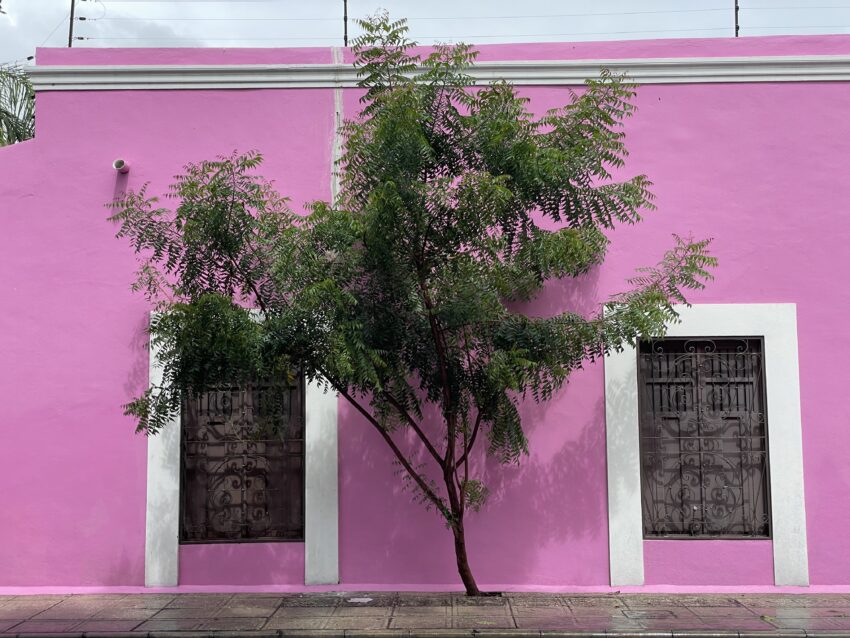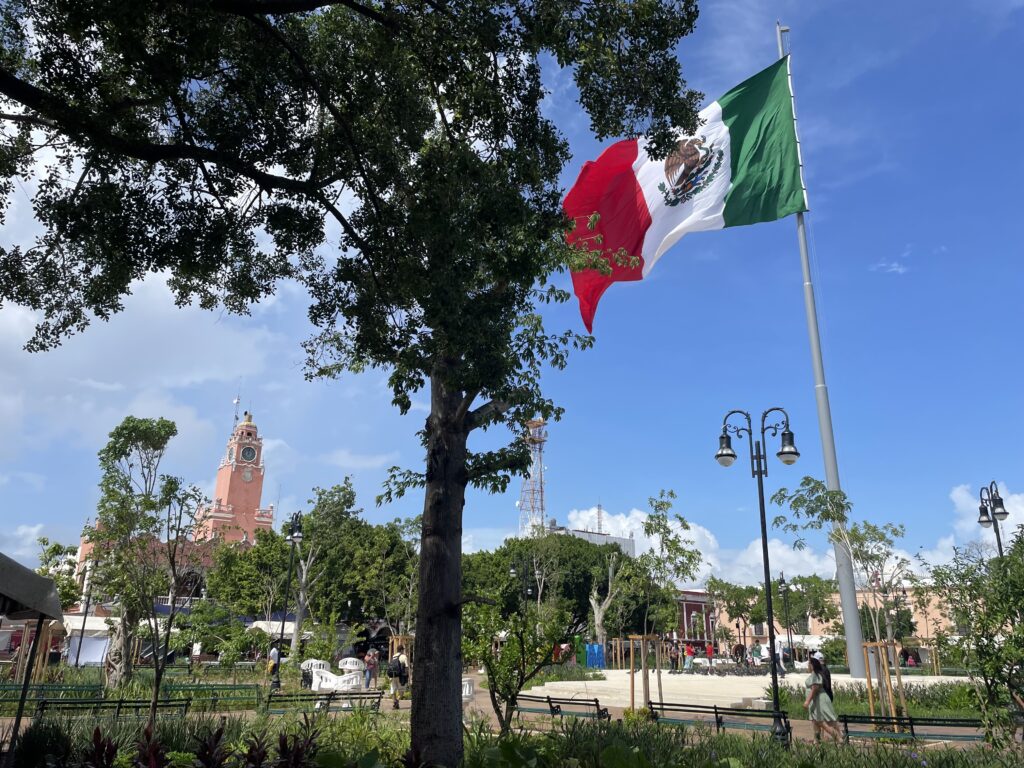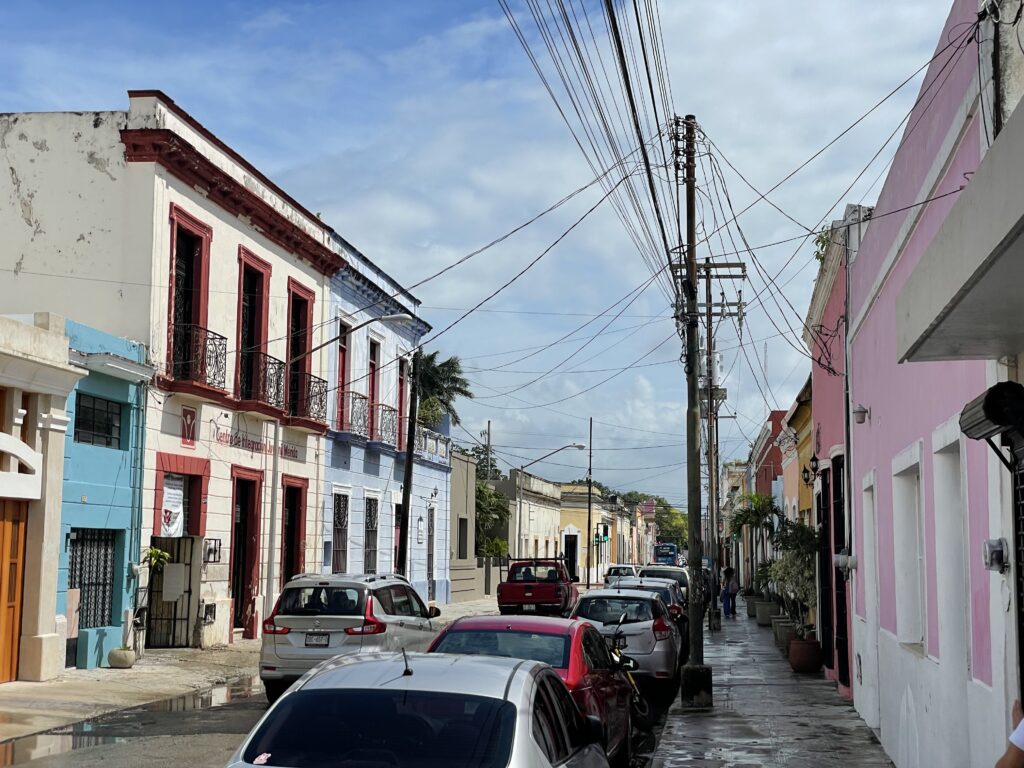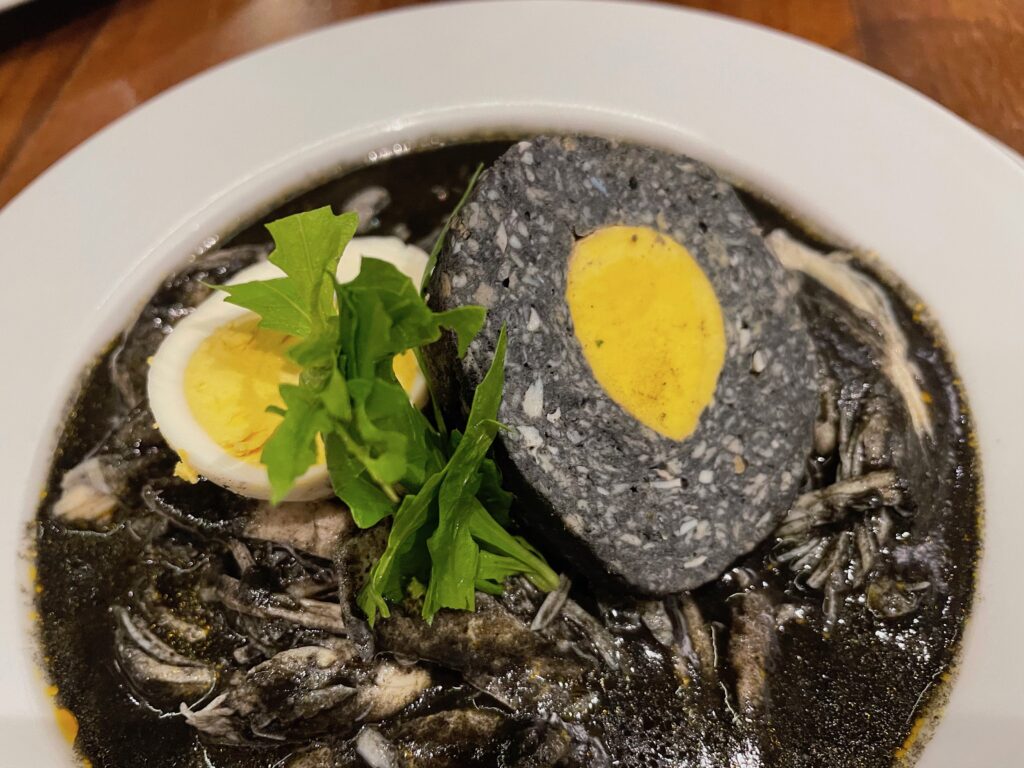It’s hot in Mérida. And very humid. Mould clings to the stucco on its colourful buildings, mosquitoes bite and I cross the road to find a spot of shade whenever I can. After the relative cool of Mexico city, it comes as a bit of a shock.
The capital of the Yucatán Peninsula, it was our home for five rather sweaty days in October. Not the hottest time of the year in this part of the world, but hot enough for me. Our stylish boutique hotel, The Diplomat, had a welcoming pool for cooling off and wonderful staff.
Merida lies close to the north-western shores of the peninsula, but it’s not one of Mexico’s main tourist spots and is many miles from the brash seaside resorts of Cancun or Tulum where most visitors to the Yucatán find themselves. It is, however, a great base for exploring the ancient city of Uxmal and the curious sinkholes called cenotes that dot the region.
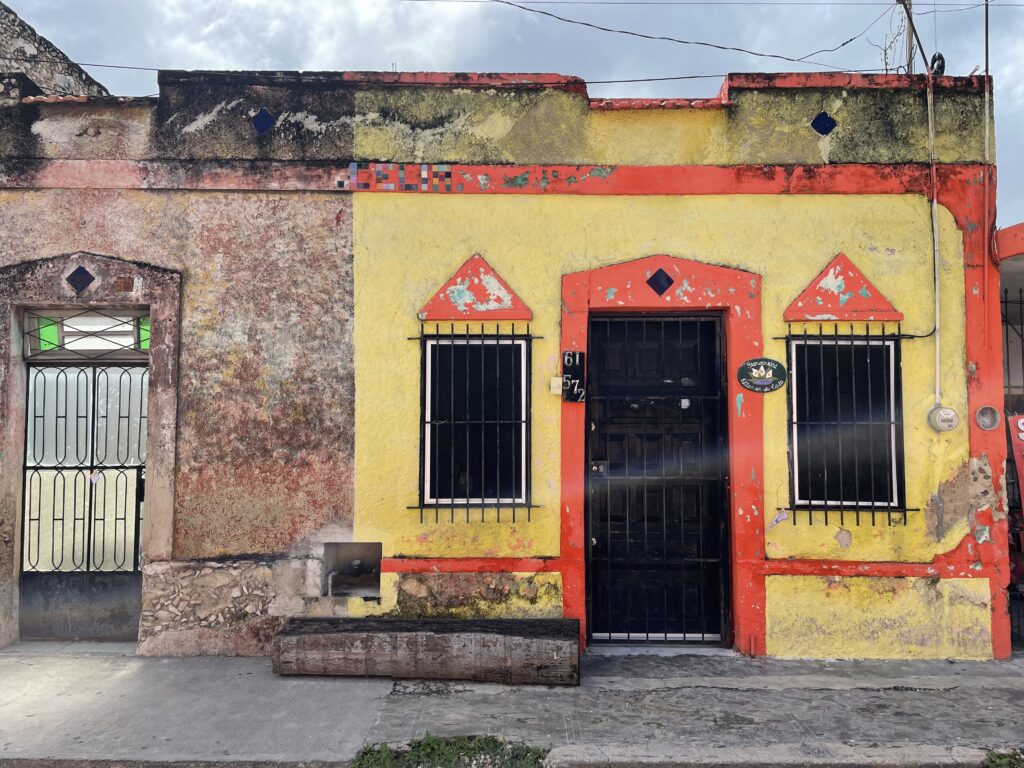
Mérida is a modest capital, founded by the conquering Spanish on the site of the old Mayan settlement of T’hó. Nothing of the latter remains physically, although its stones and bones found their way into many of the new city’s structures, and the Mayan culture lives on in the region while its people survive in their millions.
In place of T’hó is a low-level city, its historic centre packed with colourful colonial buildings concealing shaded courtyards that were and are essential for providing shelter in the heat. Many of these centuries-old buildings are being restored, some by foreigners, while others house fancy hotels, boutiques, bars and restaurants. A lot of money has been spent on renovating a few streets and squares with the tourist dollar in mind. But you don’t have to look far to find poverty, crumbling buildings and shabbiness. The further out of the centre you go, the more it is evident. And while Mexico has one of the biggest economies in the world, there is evidently little money to do something about the shocking state of the roads and the terrible drainage. Go down a pothole in Mérida and it may take weeks to get out of it again while a single downpour can flood the streets. Nevertheless, Mérida feels confident and busy, a city going in the right direction.
It boomed in the 19th century, when a few families grew incredibly rich on the production of henequen – a fibre created out of agave. This incredibly strong material, grown on plantations across the Yucatán, was exported round the world and the profits were injected into grand mansions in the city. While workers suffered and slaved away in the heat and filth, the rich imported vast quantities of marble and expensive treasures from Europe, lived in luxury and looked down their noses at the rest. The Paseo de Montejo houses many of those mansions and is a distinctively French boulevard, lined with trees. Several of the houses are open for tours and we visited them, including the Quinta Montes Molina. Guides highlighted the wealth and the art, the furnishings and decorations but seldom did we hear about the exploitation that made these people so wealthy.
That wealth is still there. On one side of the paseo is the Casa T’hó, a posh cafe and collection of boutiques aimed at rich tourists and the city’s elite that felt a bit awkward.
The Paseo de Montejo continues northward for several miles, gradually succumbing to out-of-town shopping complexes and supermarkets. An abandoned rail line runs down its spine. We stopped at the Gran Museo del Mundo Maya, a modern museum that showcases the history and culture of the Mayan people in a number of permanent galleries devoted to such subjects as religion and language. There are some amazing exhibits and treasures but the English commentary is sporadic so it’s not as enlightening as it could be for us gringos. And being an old fart, I found the lack of a chronological approach a bit confusing.
If the Paseo de Montejo was where the rich liked to stay, the Plaza Grande has always been the beating heart of the city. The cathedral looms large and extensive laurel canopies provide shade. Street vendors – the colourful lifeblood of every Mexican town and city – line the streets selling food, souvenirs, jewellery and clothes. The Palacio de Gobierno on the north side has a collection of murals that explore Mexico’s revolution and campaign for independence, while opposite is the Casa de Montejo. Built in 1540, it was the home for several centuries of the Montejo family that conquered the Yucatán and is today a somewhat disappointing museum that showcases just a few of the rooms they must’ve known. As with every museum or attraction in Mexico, it was overseen by a vast phalanx of guards and officials just waiting for ust to put a foot wrong.
The city is dotted with other pleasant, shaded squares, such as the Parque de Santa Ana, which hosts popular bars and restaurants and is often a venue for traditional music and dancing. Over the road is the Apostol, a welcoming craft beer joint that we found ourselves in on a few occasions, while clustered nearby are some popular restaurants. Among these is the Museo de la Gastronomía Yucateca, which promotes Mayan flavours and dishes. It was where I ate the most bizarre meal of my life, Relleno Negro. This is primarily made of turkey but arrives as black as night thanks to the burnt chillies used to prepare the sauce. Now I, like many others, eat first with my eyes and so the initial impression wasn’t good. To be honest, it didn’t improve much when I actually tucked into it.
I’ll try my best not to have it as my abiding memory of a lively, characterful and handsome city…

